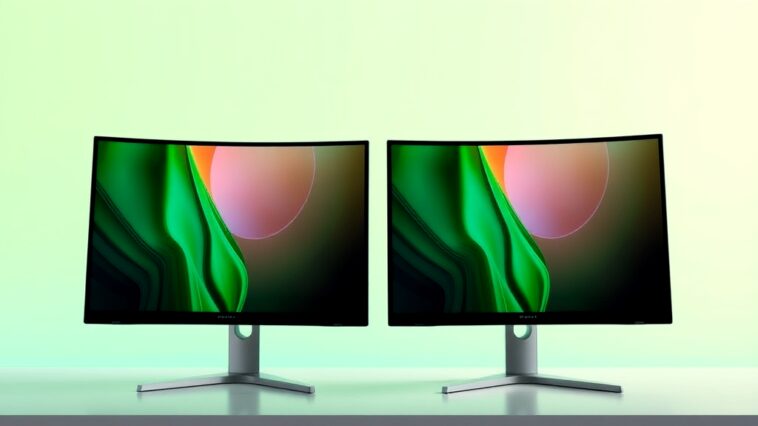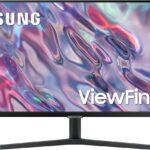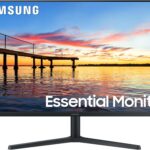When it comes to setting up your workspace, choosing the right monitor is super important! You might be wondering, “Should I get a curved monitor or a flat monitor for work?” In this article, we’re going to explore both options and help you decide which one is best for your needs. Let’s dive right in!
What is a Curved Monitor?
A curved monitor has a screen that bends slightly around you. Imagine it like a giant letter “C” that wraps around your view. This design helps to create a more immersive experience. You feel like you are in the action, especially when you are watching movies or playing games. But how does it help with work?
Benefits of Curved Monitors for Productivity at Work
Curved monitors offer several benefits that can boost your productivity:
- Wider Field of View: Curved monitors can make it easier to see everything on your screen without turning your head too much. This is great for multitasking!
- Reduced Eye Strain: The curve can help reduce glare and reflections, which means less eye strain during long hours of work.
- Better Depth Perception: Curved screens can give you a sense of depth, making it easier to focus on different parts of your work. This can be especially handy for graphic design work.
- Enhanced Immersion: If you’re working on creative projects like video editing or designing, a curved monitor can help you feel more connected to your work.
What is a Flat Monitor?
A flat monitor has a screen that is, well, flat! It’s the traditional style of monitor that most people are used to. These monitors have been around for a long time and are used in many offices.
Advantages of Flat Monitors
Flat monitors also have their perks, especially for certain tasks:
- Cost-Effective: Flat monitors are often less expensive than their curved counterparts. This means you can save money for other important things.
- Space-Saving: Flat monitors are usually more compact and easier to fit into small workspaces.
- Simple Setup: Setting up a flat monitor is usually straightforward. You just plug it in, and you’re ready to go!
- Great for Spreadsheets: If your work involves a lot of spreadsheet tasks, you might find that a flat monitor is easier to use. You can see everything clearly without any distortion.
Flat vs Curved Monitor Comparison for Office Use
Let’s compare these two types of monitors based on several important factors:
1. Productivity Differences
When it comes to productivity, curved monitors can help with multitasking efficiency in the workplace. Their wider field of view allows you to have multiple windows open and see them all clearly. On the other hand, flat monitors are fantastic for specific tasks like coding and programming, where clarity and straight lines are essential.
2. Ergonomics
Curved monitors are designed with ergonomics in mind. They can help reduce neck and eye strain during long hours of work. Flat monitors, while still comfortable, may not offer the same level of support for prolonged use.
3. Impact on Eye Strain
One of the main concerns when working long hours is eye strain. Studies have shown that curved monitors can help reduce eye strain by minimizing glare and providing better viewing angles. Flat monitors can cause more glare, especially in brightly lit rooms.
4. Best Use Cases
If you’re a creative professional, a curved monitor might be the better choice due to its immersive experience. However, for those who do a lot of office tasks like emailing or spreadsheet handling, a flat monitor could still be the best choice for business environments.
Curved Monitor Ergonomics for Long Hours of Work
When you’re working for hours on end, comfort is key! Curved monitors are designed to give you a better viewing angle, which means you don’t have to strain your neck or eyes as much. If you’re someone who spends all day in front of a screen, this can make a huge difference in your overall comfort.
How Curved Monitors Improve Multitasking Efficiency in the Workplace
If your job requires you to juggle multiple tasks, a curved monitor can help with that. The curvature allows you to see everything at once, making it easier to switch between applications. You can have your email open on one side while working on a report on the other, all without losing focus!
Evaluating the Cost-Effectiveness of Curved Monitors for Business Use
It’s essential to think about cost when choosing between a curved and flat monitor. While curved monitors might be more expensive upfront, they can lead to better productivity and comfort, which might save you time and money in the long run.
Flat Monitors: Are They Still the Best Choice for Business Environments?
While flat monitors have been the traditional choice for many years, they still have their place in the office. They are often more affordable and can suit straightforward tasks. If your work doesn’t involve a lot of multitasking or creative projects, a flat monitor could be just fine for you.
Curved Monitor Advantages for Creative Professionals
Creative professionals such as graphic designers, video editors, and artists can benefit significantly from curved monitors. The immersive experience lets you see your designs from different angles, making it easier to spot mistakes and enhance creativity.
How to Choose Between a Flat and Curved Monitor for Design Work
When deciding between a flat and curved monitor for design work, consider the following:
- What is your budget? Curved monitors typically cost more.
- What tasks will you perform? If you need to multitask, a curved monitor may be better.
- Do you experience eye strain? A curved monitor might help alleviate that issue.
Curved Monitors for Gaming vs Flat Monitors for Work: A Detailed Look
If you’re someone who enjoys gaming after work, you might be leaning towards a curved monitor. They offer a more immersive experience, which can enhance your gaming. However, if your main focus is work, a flat monitor may be a more practical choice.
Flat vs Curved Monitor Comparison for Remote Work Setups
In today’s world, many people are working from home. If you’re setting up a remote work office, think about what you need:
- If you’re mostly on video calls and doing paperwork, a flat monitor might serve you well.
- If you’re designing or multitasking a lot, a curved monitor can help keep you organized and comfortable.
Conclusion
Choosing between a curved vs flat monitors for work can be a tough decision. Each type has its benefits, and the right choice depends on your specific needs. If you prioritize comfort and multitasking capabilities, a curved monitor may be the way to go. However, if you’re looking for a budget-friendly option for straightforward tasks, a flat monitor could be perfect.
Remember to think about how you work best and what tasks you do most often. With the right monitor, you can boost your productivity and make your work environment much more enjoyable!
Curved vs Flat Monitors for Work: Top 10 FAQs
1. What is a curved monitor?
A curved monitor has a screen that bends slightly around you. This shape can help make images look more realistic and fill your vision better. It creates a more immersive experience.
2. What is a flat monitor?
A flat monitor has a screen that is completely straight. It looks like a regular TV or computer screen. Flat monitors are very common and easy to find.
3. What are the advantages of curved monitors?
Curved monitors can reduce glare and reflections. They also help your eyes move naturally across the screen. This can make it easier to focus and work for longer periods without straining your eyes.
4. What are the advantages of flat monitors?
Flat monitors are usually cheaper and come in many sizes. They are also easier to mount on walls. Many people find them simple to use for everyday tasks like surfing the internet or writing documents.
5. Which monitor is better for multitasking?
Curved monitors can be great for multitasking because they offer a wider field of view. You can see multiple windows at once without moving your head too much. Flat monitors can also work, but you may need two screens to match the same field of view.
6. Do curved monitors help with eye strain?
Curved monitors can help reduce eye strain by keeping your eyes at a more natural angle. However, it also depends on the individual and how far you sit from the screen. Good lighting and regular breaks are important too.
7. Are there any disadvantages of curved monitors?
Yes, some people find curved monitors can distort images, especially if they are not sitting directly in front of them. They can also be more expensive than flat monitors.
8. Can I use a curved monitor for gaming and work?
Yes! Curved monitors are popular for gaming because they provide an immersive experience. They can also be great for work, especially if you deal with design or multimedia content.
9. How do I choose the right size monitor for my workspace?
For a curved monitor, a size between 27 to 34 inches is usually good for most tasks. For a flat monitor, anything from 24 to 32 inches works well. Make sure it fits your desk and you can see it comfortably.
10. Which monitor type is best for my budget?
If you have a tight budget, a flat monitor is usually the best choice. There are many affordable options available. If you can spend a bit more, consider a curved monitor for a better viewing experience.




 Explore our comprehensive guide to understand the benefits of each display type, from immersive viewing experiences with curved screens to the versatility of flat monitors. Perfect for gamers, professionals, and casual users alike!
Explore our comprehensive guide to understand the benefits of each display type, from immersive viewing experiences with curved screens to the versatility of flat monitors. Perfect for gamers, professionals, and casual users alike!
